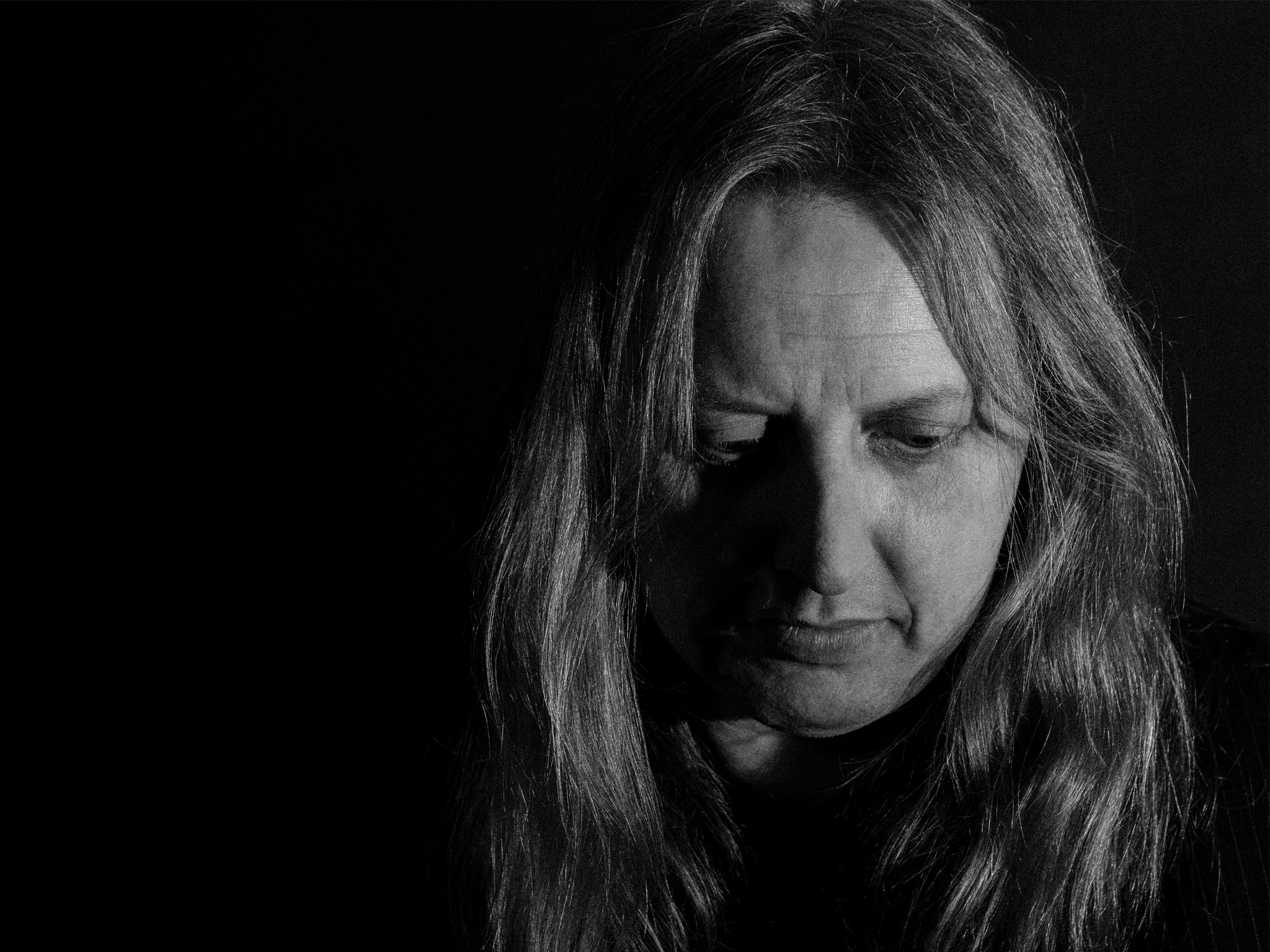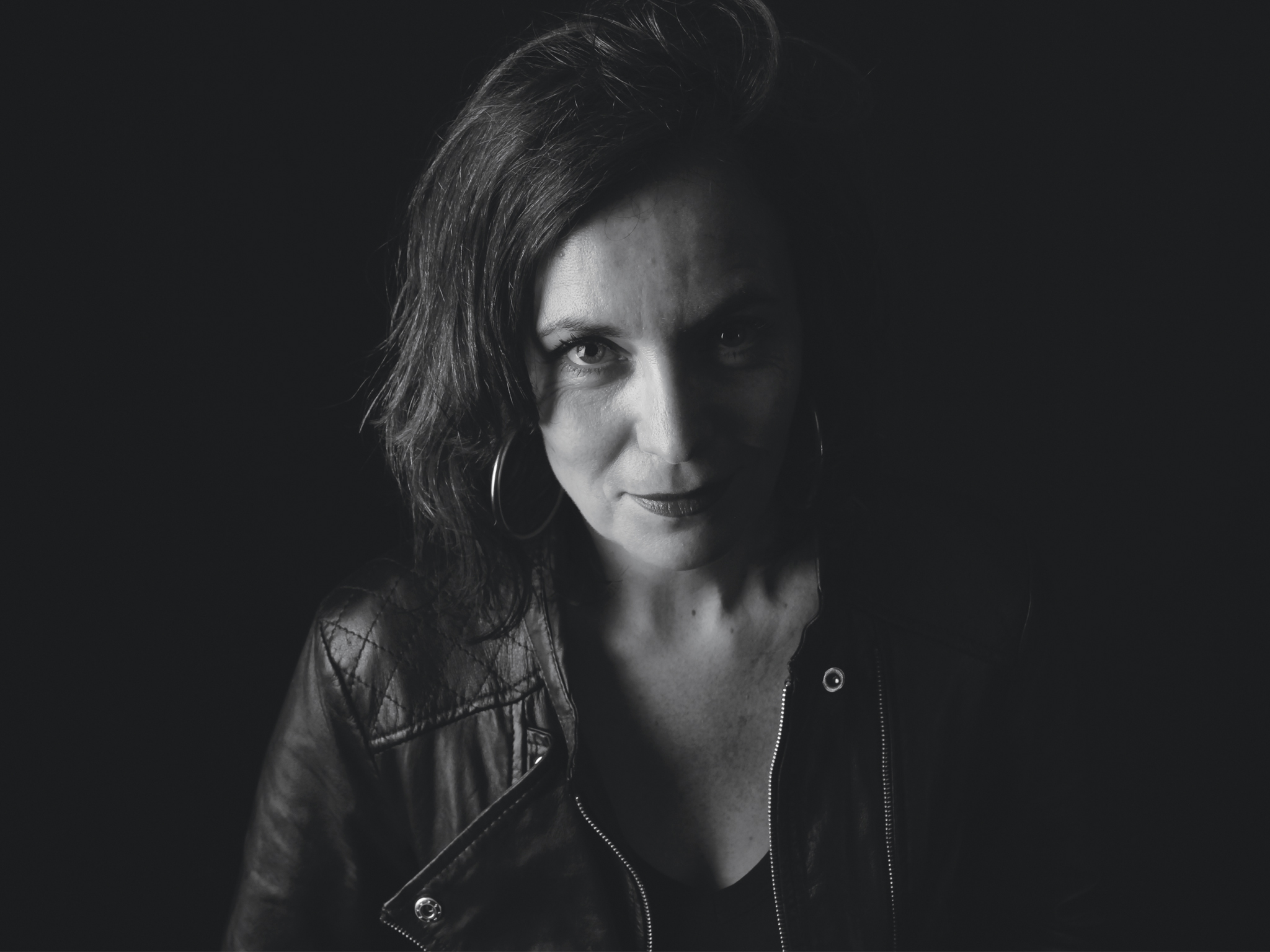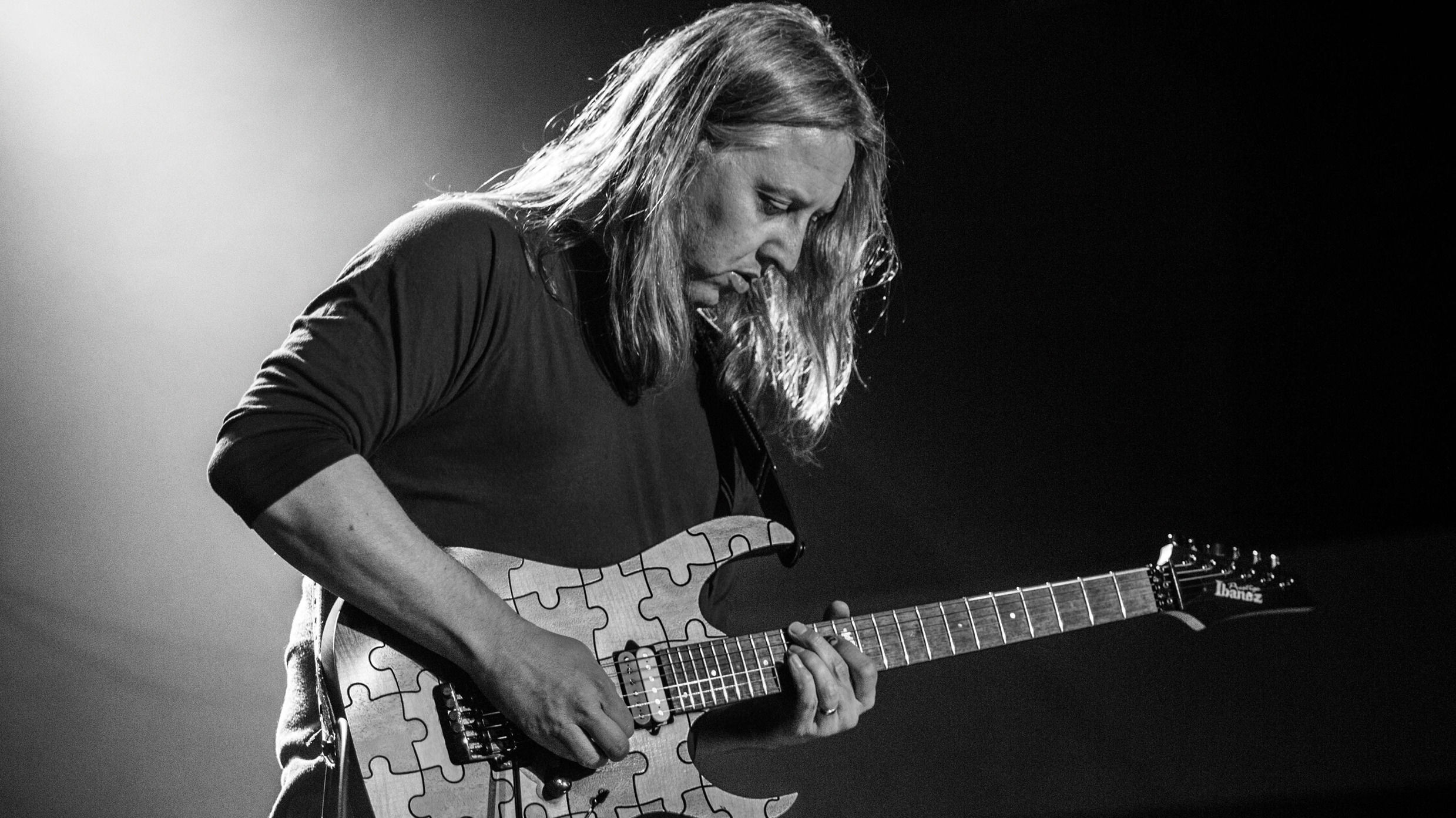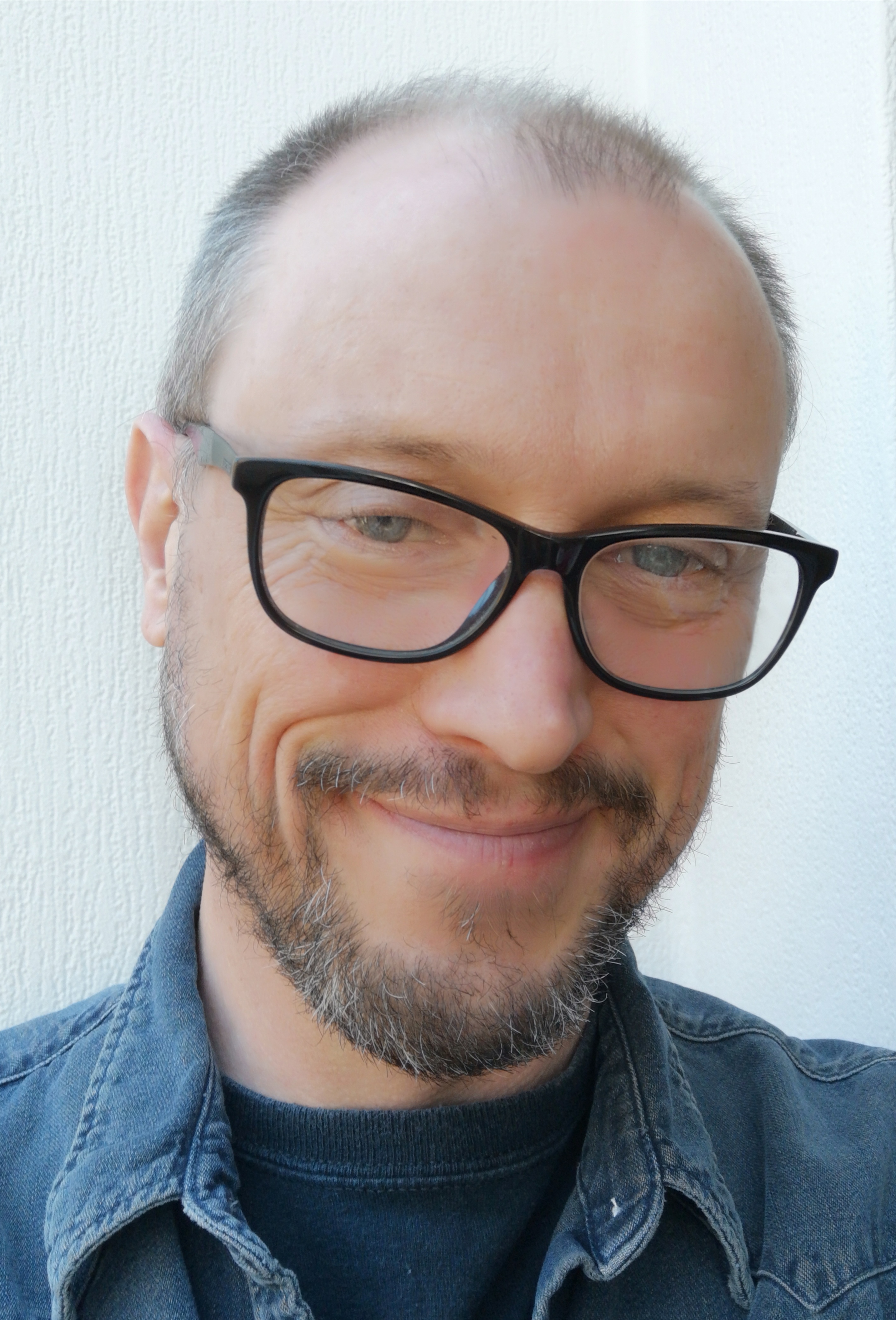Dave Foster has an unbelievable left hand. With his index finger on the guitar’s fifth fret he can stretch his small finger so it lands on the 13th. Any guitarist will tell you, that’s an impressive reach. As a younger player his bible was Allan Holdsworth’s legendary tendon-tearing instructional book, Reaching For The Uncommon Chord.
Last year Foster played Cruise To The Edge as part of the Steve Rothery Band, and Holdsworth was aboard too. “We got in to watch him soundcheck,” recalls Foster, in his ever-enthusiastic Northern brogue. “Within 10 minutes I felt he was playing a completely different instrument to me. But music’s all about tension and release, and with a lot of fusion stuff you just get the tension. The best solos really are the ones you can sing back. I go to all the Marillion Weekends, and the moment Rothers starts up a solo everybody in the audience is singing along.”
This intuitive grasp of what makes for good, memorable music explains why Foster’s steadily earning acclaim as one of the UK prog scene’s more interesting players and composers. “Dave’s one of the most exciting and original guitar players I’ve come across,” Steve Rothery tells Prog. “He uses unusual inversions in his chords which give them a distinctive sonic complexity, and he has a great approach to rhythm playing. He is also a demon shredder. Our styles really complement each other and there is a sort of musical telepathy between us, which makes writing pretty effortless.”
We meet Foster fresh from May’s Panic Room Weekend at The Robin in Bilston. Having been introduced by Yatim Halimi, mutual bassist for Panic Room and the Rothery Band, Foster joined Anne-Marie Helder and band in 2015, recording the classy Essence album with them that year.
Helder, Halimi and Rothery are all guests on Dreamless, Foster’s second, crowdfunded solo album, joined by the Rothery Band’s Leon Parr and Riccardo Romano, Panic Room’s Jonathan Edwards, Matt Cohen of The Reasoning and members Mr. So & So, the band Foster formed in music college in the late 80s. “The level of musicians I was able to get my hands on was outrageous,” says Foster. “I’m so proud of it. The best thing about writing is that you can create the songs that you wish already existed, and that’s what I tried to do. If I’d sold 100 copies I’d have still been happy, but I’ve had nothing but good feedback.”
Dreamless shows just what diverse influences and styles the guitarist can draw on. The sweep of Lingering owes much to Peter Gabriel’s 80s output, and the massive Black Sunrise channels Kashmir-era Led Zeppelin. The Muse-y Amitriptilyne is named after a drug he was prescribed for its muscle relaxant properties (he manages a bone condition called ankylosing spondylitis), while the largely instrumental Morphine Sleep has become a favourite among fans.
“I’ve been surprised by the reception for that one. I went for that Rothery/Gilmour soaring melodic thing, and I must have pulled it off!”

He admits he’s no vocalist, but Foster does sing on that tune as well as the title track, and he duets with Helder on lovely ballad Counting Clouds. “Anne-Marie’s a special person, and a jaw-dropping musician. The track Brahma’s got an Eastern flavour and switches from the major to the minor of the same key, so trying to keep a consistent melody is really tricky. She came in and did it without even thinking, then started adding all these harmonies on top. She was brilliant.”
The principal vocalist on the album is Dutch singer Dinet Poortman, best known for her work with NOONe. Steve Rothery introduced them and they subsequently began writing together. “I’m a big fan of Claudia Brücken,” says Foster, “and Dinet has a similar uniqueness in the way she approaches melody. She’s a fantastic person to be around, really positive.”
The same’s true of Foster himself, who’s relentlessly upbeat. He was born in St. Helens in 1971 and was only six when he picked up the guitar his brother had just given up. He caught the bug, soaking up everyone from Prince, George Clinton and Suzanne Vega to Eddie Van Halen, David Gilmour and Trevor Rabin.
90125 was the first CD he bought, in 1983, but he was truly put on the prog path three years later by GTR’s self-titled album. “With the vinyl, you got a fold-out family tree so you could see the members’ connections with all these other bands. I followed this through and found Genesis, I bought The Lamb…. Then King Crimson – Beat was my first album of theirs, and it was music you’d never heard in your life. I thought Yes was quite a new band, but then I realised there was this huge back catalogue I knew nothing about, so I bought The Yes Album.”
He went to Leigh Music College in 1988, where he was tutored by fusion guitarist Gary Boyle (of Isotope), and formed his first serious band, Mr So & So. Their defining album, 1995’s Compendium, is worth revisiting – it shows a band in the then deeply unfashionable slipstreams of XTC, 80s Yes, Genesis, and Faith No More. “Early on we enjoyed experimenting,” he says. “When you listen to Angel Dust then put on The Lamb or Skylarking, it creates an unusual palette.”

Although the audience for their melodic and intelligent music remained ‘selective’, a copy of Compendium did reach Steve Rothery. In 1996 he invited them to play a Marillion fan gathering in London. “I’d been impressed with them,” Rothery recalls, “and signed them to my record label and got to know the band very well. They went on to support Marillion the next year on the This Strange Engine Tour.”
The band split after 1998’s The Overlap (though they later reunited), leaving Foster so disillusioned that he put his gear on eBay. It didn’t sell, and his love for music was rekindled by his next band, Sleeping Giant. But another setback came when a Mr So & So reunion stalled in 2007 and Foster was made redundant from his job in retail. “It was a bleak time,” he says, “but Steve was always there. He’s been fantastic to me as a friend and mentor. Around then Steve and Hannah Stobart had recorded Ostara and Steve wanted to take The Wishing Tree out live, I was over the moon when he asked if I would join the live band. It gave me the bright light I needed.”
He released his solo debut Gravity in 2010, and two years on a one-off performance in Plovdiv, Bulgaria led to the formation of the final line-up of the Steve Rothery Band. The success of that show led to Rothery’s acclaimed 2014 solo album The Ghosts Of Pripyat, co-written by Foster and recorded at Real World Studios. On the tour they were joined by Stillmarillion’s uncannily Fishy vocalist, Martin Jakubski. “It’s such a good laugh with that band,” says Foster. “Half the gig is Pripyat and the other half is Marillion songs, and that format works. The last gig we did was at Cambridge Junction, it was a Sunday night and it was rammed. I was so glad for Steve.”
At the Panic Room Weekend this year, the guitarist debuted The Dave Foster Band, completed by Poortman, Helder, Edwards, Halimi and Parr. The set went well and he’s keen to do more. And after Panic Room’s summer dates, Foster’s looking forward to contributing to their next album. “When we first got in a room we really connected as musicians and people, it was the most obvious thing to us all that I should be in the band. The more good songwriters there are the more your quality control increases – you’re very choosy about what you show people. I’ll only be putting my best ideas forward.”
He’s also currently working on the follow-up to his quirky 2013 debut novel, The Balloon Race, which posits a steampunky alternative future where the two World Wars never happened.
As a guitar tutor, he still uses Reaching For The Uncommon Chord to show his pupils what you can achieve if you put the effort in. “I’m like Jack Black in School Of Rock,” he says. “My pupils go home with Foxtrot and Drama. I’ve got them walking around their house singing Zappa’s Dangerous Kitchen! There’s a great quote from Muhammad Ali – ‘Impossible is not a declaration, it’s a dare’, and that’s how I’ve always approached my playing.”
That reach of his continues to impress.
Dreamless is out now on The Dave. See Bandcamp for more.

